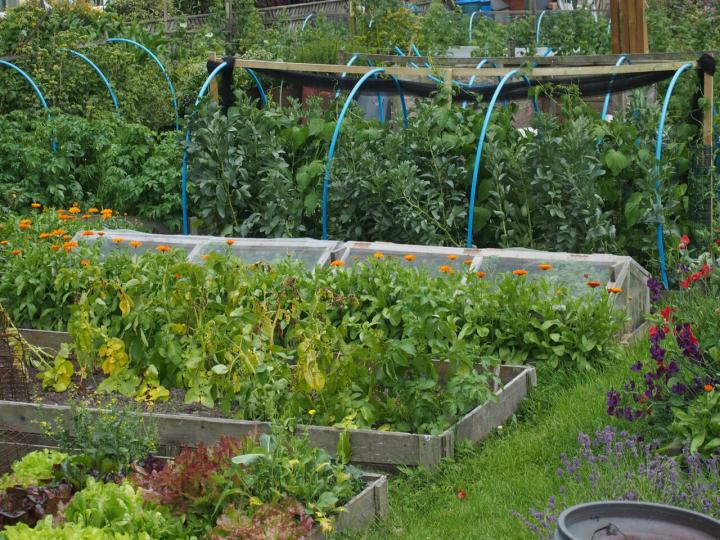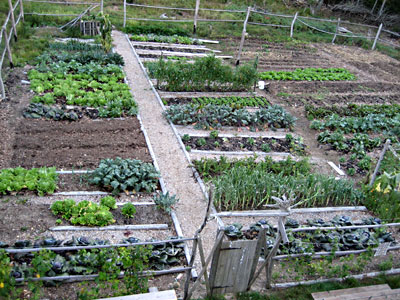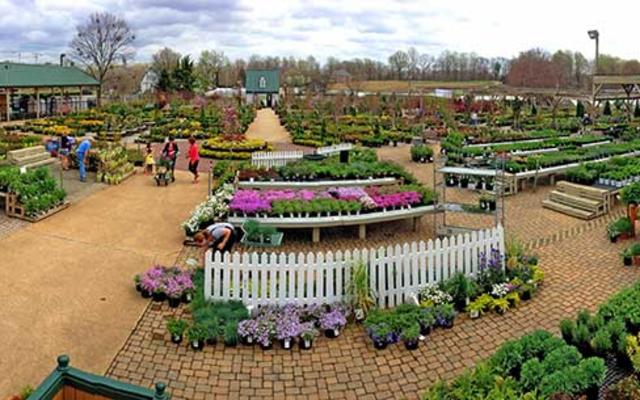Enjoy the Benefits of Homestead Gardening
Enjoy the Benefits of Homestead Gardening
Blog Article
Learn Just How to Grow a Thriving Horticulture Environment for All Ability Degrees
Producing a growing yard is a diverse venture that can be welcomed by people at any kind of skill degree. By examining vital parts such as soil health and wellness, suitable plant choice, and seasonal treatment routines, one can establish a sustainable horticulture practice that produces rewarding outcomes.
Recognizing Your Yard Space
In the world of gardening, recognizing your garden space is paramount to cultivating a thriving landscape (Homestead Gardening). The first step in this venture includes analyzing the particular qualities of your plot. Elements such as soil composition, sunshine exposure, and water drainage play essential roles in figuring out the viability of your yard for various sorts of plants
Begin by performing a dirt examination to assess pH levels and nutrition material, which will inform any type of essential changes. In addition, observe just how much sunshine your area obtains throughout the day. Various plants have varying light requirements; some grow in complete sunlight, while others favor partial or full color.

Last but not least, assess the offered area and strategy accordingly. This consists of thinking about plant heights and infected ensure ample space for growth without overcrowding. By obtaining a thorough understanding of your garden area, you set the structure for an effective gardening experience.
Picking the Right Plants
Picking the right plants for your yard requires careful consideration of various aspects, consisting of climate, dirt conditions, and individual preferences. Start by examining your local environment, as specific plants thrive particularly temperature ranges and weather condition patterns. Exotic plants might not endure in colder areas, while hardy perennials can hold up against rough winter seasons.

Consider your individual choices, consisting of aesthetic allure and maintenance degrees. Determine whether you like vibrant flowers, lavish vegetation, or edible plants. In addition, consider the time and effort you want to buy plant care, as some ranges demand even more attention than others.
Finally, think of the yard's design and light direct exposure. Sunlight patterns throughout the day will affect your choices-- some plants require full sun, while others thrive in color. By attentively examining these aspects, you can produce a unified and productive yard tailored to your setting and tastes.
Important Horticulture Devices
A well-appointed garden enthusiast can dramatically boost their horticulture experience and outcomes. Crucial gardening tools are basic to growing a successful yard, regardless of skill level. First, a durable spade is vital for digging and transforming dirt, while a trowel allows for accurate planting and hair transplanting of smaller plants.
Trimming shears are essential for keeping plant wellness by getting rid of dead or thick branches, advertising far better air blood circulation and growth. Furthermore, a hand rake works for removing debris and aerating the soil, making sure optimum conditions for plant roots.
Gardening gloves shield hands from chemicals, blisters, and thorns, making them an important device. A watering can or hose pipe with an adjustable nozzle find more information ensures that plants obtain adequate moisture without overwatering.
Finally, take into consideration buying a tough wheelbarrow for moving dirt, plants, and devices around the yard efficiently. By constructing a high quality toolkit that includes these necessary products, garden enthusiasts can tackle numerous tasks with confidence and ease, leading the way for a prospering gardening setting. Bear in mind, the right devices not just enhance performance but also boost the total enjoyment of the horticulture process.
Soil Preparation and Maintenance
Quality dirt is the foundation of an effective garden, making proper prep work and upkeep critical for healthy plant growth. The initial step in soil prep work involves examining its pH and nutrient degrees. This can be accomplished through soil screening kits available at horticulture centers or with specialist solutions. Based upon the test results, modifications can be made to enhance dirt problems for specific plant needs.
Including organic matter, such as compost or well-rotted manure, is necessary for enhancing dirt structure and fertility. This not just improves nutrition availability read however additionally promotes helpful microbial task. Furthermore, correct drainage is vital; heavy clay soils may need the enhancement of sand or perlite to enhance oygenation.
Regular upkeep of soil wellness consists of mulching, which conserves wetness and reduces weeds. Revolving crops each year assists protect against nutrient exhaustion and reduces pest and condition risks. It is additionally vital to prevent over-tilling, which can interrupt soil framework and injury beneficial microorganisms.
Ultimately, a regular commitment to dirt prep work and upkeep will certainly lead to a flourishing garden, making sure that plants obtain the vital nutrients they require for robust growth and efficiency.
Seasonal Care and Management

In spring, emphasis on planting new seeds and plants, while also carrying out dirt tests to modify nutrient deficiencies. Frequently examine for pests and diseases, as these can proliferate with the warming weather condition. Summer season demands constant watering and mulching to retain moisture, together with trimming for better air blood circulation.
As autumn strategies, it's more tips here time to prepare the garden for inactivity. This includes harvesting crops, cleaning up particles, and using a layer of mulch to secure plant origins from frost. Think about growing cover crops to enhance the soil throughout the winter season months.
Check frameworks like greenhouses for damage and guarantee appropriate insulation for sensitive plants. By adapting your gardening practices to the seasonal cycles, you can cultivate a growing setting that sustains plant wellness year-round.
Conclusion
In verdict, cultivating an effective yard needs a thorough understanding of essential principles such as soil composition, sunshine direct exposure, and appropriate plant selection. Regular seasonal treatment and administration practices even more boost plant wellness and productivity.
Selecting the right plants for your garden calls for careful consideration of numerous elements, consisting of environment, dirt conditions, and personal choices. Conduct a dirt examination to determine pH degrees and nutrient web content, which will lead you in choosing plants that will grow in your garden.Last but not least, think about investing in a strong wheelbarrow for moving soil, plants, and devices around the yard efficiently.Quality soil is the foundation of a successful yard, making appropriate prep work and upkeep essential for healthy and balanced plant growth. Homestead Gardening.In final thought, cultivating a successful garden requires an extensive understanding of vital concepts such as soil make-up, sunshine direct exposure, and suitable plant selection
Report this page